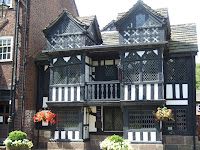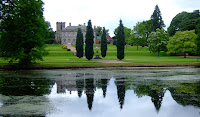 After a couple of weeks of miserably cold, wet weather, the August Bank Holiday was promised as a return to real summer. It was certainly finely timed, as right up to the end of Friday, there was no let up in the weather: but Saturday started with a total change.
After a couple of weeks of miserably cold, wet weather, the August Bank Holiday was promised as a return to real summer. It was certainly finely timed, as right up to the end of Friday, there was no let up in the weather: but Saturday started with a total change.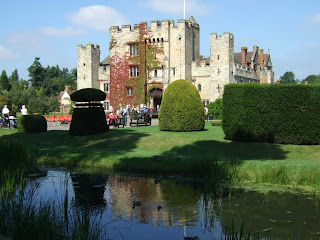 We made the most of it and headed south from London. The first stop of the day was Hever Castle. We arrived just before opening time, and were at the head of a ceaseless stream of traffic entering the car park. This birthplace and childhood home of Anne Boleyn, is an extremely popular destination. It is a beautiful castle, but almost
We made the most of it and headed south from London. The first stop of the day was Hever Castle. We arrived just before opening time, and were at the head of a ceaseless stream of traffic entering the car park. This birthplace and childhood home of Anne Boleyn, is an extremely popular destination. It is a beautiful castle, but almost  appeared to us as a Victorian fake, as the interiors had been totally redone by the wealthy American Waldorf Astor family in the early 1900's. He imported Italian ruins and statues for the gardens, which now, a hundred years later, look like they have been there forever but in reality, are as genuine as a NZ Ming vase.
appeared to us as a Victorian fake, as the interiors had been totally redone by the wealthy American Waldorf Astor family in the early 1900's. He imported Italian ruins and statues for the gardens, which now, a hundred years later, look like they have been there forever but in reality, are as genuine as a NZ Ming vase. A huge hit with the younger set is the very inventive water maze where you have to dodge unexpected fountains as you make your way to the centre.
A huge hit with the younger set is the very inventive water maze where you have to dodge unexpected fountains as you make your way to the centre.Leaving Hever we ventured north to see Lullingstone Castle which has recently featured on two TV series about the trials and tribulations of maintaining a stately pile; and the scheme the heir, Tom Hart Dyke, dreamed up while in captivity in South America - a world garden.
Laid out in the old kitchen garden are the vaguely recognizable shapes of the continents and some islands. Tasmania, New Zealand,
 Japan and England are certainly not to scale and the NZ islands are especially impressive. We missed the pohutukawa flowering by a couple of weeks. Australia even has Ayres Rock hidden among the Eucalyptus. The plants are all growing in the continents they come from so it is most educational to wander round and discover the origins of various species. It is a fabulous feature which is getting better as each season passes and the plants grow and get more established.
Japan and England are certainly not to scale and the NZ islands are especially impressive. We missed the pohutukawa flowering by a couple of weeks. Australia even has Ayres Rock hidden among the Eucalyptus. The plants are all growing in the continents they come from so it is most educational to wander round and discover the origins of various species. It is a fabulous feature which is getting better as each season passes and the plants grow and get more established. The actual "Castle", although nowhere near as polished a production as Hever, feels real; and the heritage of years of family living there is much more tangible.
The actual "Castle", although nowhere near as polished a production as Hever, feels real; and the heritage of years of family living there is much more tangible.We wended our way back through the attractive towns and villages that line the A25 with the odd side trip to other favourite spots like Friday Street.
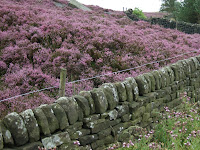
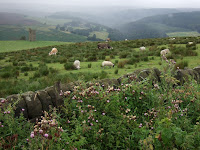
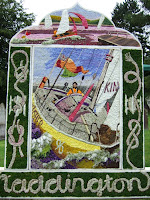
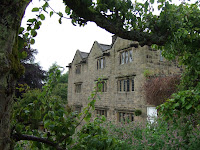
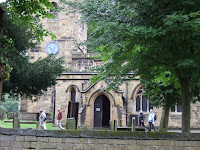


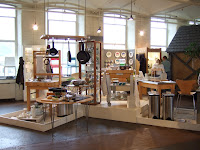












 The next village was Great Hucklow. This small village was planning their annual village gala; all the gardens were decorated and two wells dressed.
The next village was Great Hucklow. This small village was planning their annual village gala; all the gardens were decorated and two wells dressed. 